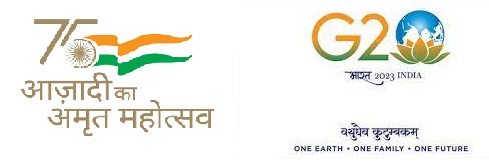By geetasingh on 21 Jul 2020
English
Programmes Participant Benefits:
After this programme, the participant will be able to
- Understand the basic technologies of power generation
- Advanced technologies of various renewable energies
- Basics of energy conversion cycles
- Development of various fuels
- Basics of coal/fuel, air, flue gas systems
- Start-up and efficiency aspects of thermal power plants
- Combined cycle power generation
Programmes Course Coverage:
History and growth of Power Sector and Generation types. Major resources for power generation: conventional and non-conventional generation.Share of: Thermal, Hydro, Nuclear, Combined cycle etc.Issues and challenges with the conventional generation methods.Technologies for sustainable and green power generation
Application of thermodynamic cycles for power generation, Temperature, Pressure, Enthalpy and Entropy, Overview of Carnot cycle, Rankine Cycle and Brayton Cycle., P-V diagram, T-S diagram of Rankine cycle.
Coal, oil and natural gas, Coal properties and grades, Higher Heating Value (HHV), Lower Heating Value (LHV) of coal, Calculation of air-fuel ratio, Stoichiometric air and excess air, Flue gas, coal handling systems
Water Tube Boilers and Fire tube boilers, Boiler Circulation System, Natural Circulation, Forced Circulation, Once Through, Sub-critical and Supercritical Systems., Water Wall Tubes, Steam Drum, Superheater, Reheater and Economizer., Boiler vents, drains and safety valves
Tangential Firing and Wall firing. Importance of steam in oil firing system. Oil burners, coal burners. Low NOx burners and their significance. Coal feeders and Pulverisers (Mills)
Fans, Fans types, Fan characteristics and application in thermal Plants, Air and Draft system: Primary air (PA) fan, secondary air (SA) fan and Induced draft (ID) fan., Seal air fans and scanner air fans. Air Pre-Heaters: trisector and bisector type.
Boiler furnace purging, boiler light-up and starting of coal firing.
Boiler losses and boiler efficiency, efficiency aspects of thermal power plants
Introduction to Gas Turbines, Basic theory of gas turbine cycle and combined cycle (steam turbine coupled with gas turbine), Plant layout and auxiliary systems
Overview of various advanced generation technologies. Wind Energy Conversion Systems: Fixed speed, Variable speed turbines, wind farms, issues and challenges.
Programmes Who May Attend:
Any executive
Programmes Coordinators:
Programme Overview and Objective:
This programme will provide the basic understanding and knowledge of different power generation technologies and gives a bird’s-eye view about power generation.
Programmes Category:
Programmes Venue:
Online Through Microsoft Teams
Programmes Open to External Paid Participants:
Programmes Residential/Non-residential:
Programmes Start Date:
Monday, August 10, 2020
Programmes End Date:
Friday, August 14, 2020
Programmes No of Days:
5
Programmes Category Email:
Programme ID:
50131061
Training Coordinator Employee Number:
7718
Training Coordinator Mobile Number:
9650992071
Scheduled/Unscheduled/Drum/Sponsored:
Organizer - Name:
NTPC-PMI
Program Status:
Need Based/Competency Based:

